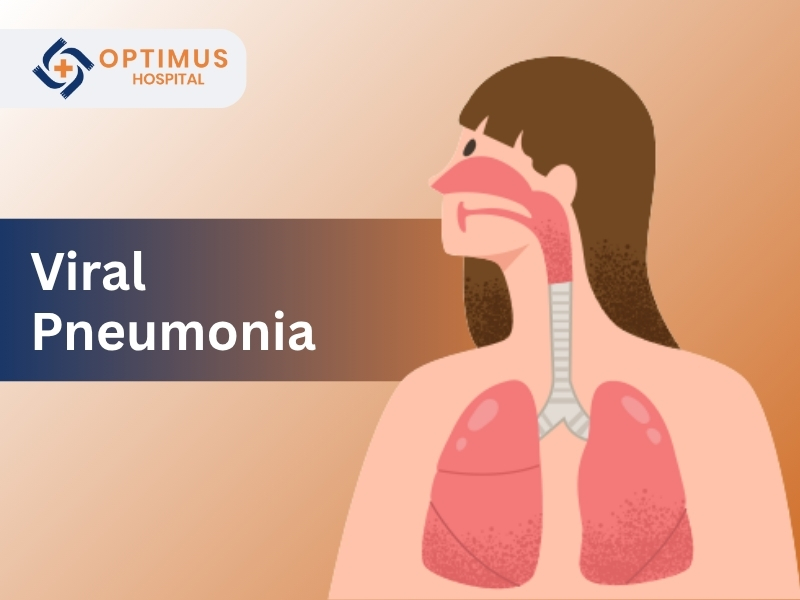When someone has viral pneumonia with severe ARDS and CKD, they are dealing with three serious health problems at the same time. Each of these conditions on its own is dangerous, but together, they can become life-threatening if not managed properly. In this blog, we’ll explain what each condition is, how they affect the body, and how doctors treat them.
This blog is written in a simple way so that even a child or non-medical person can understand. Whether you’re a caregiver, patient, or just someone looking to learn, you’re in the right place.
What Is Viral Pneumonia?
Viral pneumonia is a type of lung infection caused by viruses like influenza (flu), COVID-19, RSV, or adenoviruses. Unlike bacterial pneumonia, which is treated with antibiotics, viral pneumonia may not respond to such medications and often needs supportive care.
Symptoms of Viral Pneumonia Include:
-
High fever
-
Cough (dry or with mucus)
-
Chest pain
-
Shortness of breath
-
Fatigue
-
Muscle aches
This infection causes inflammation in the lungs, making it harder for oxygen to reach the bloodstream.
What Is ARDS (Acute Respiratory Distress Syndrome)?
ARDS, or Acute Respiratory Distress Syndrome, is a serious lung condition that often occurs as a complication of viral pneumonia. In ARDS, fluid builds up in the tiny air sacs (alveoli) of the lungs. This prevents oxygen from getting into the blood, which can lead to low oxygen levels, even with oxygen support.
Symptoms of Severe ARDS:
-
Severe shortness of breath
-
Rapid breathing
-
Bluish skin or lips (due to low oxygen)
-
Confusion
-
Low blood pressure
ARDS can develop quickly and usually requires ICU care, often with ventilator support.
What Is CKD (Chronic Kidney Disease)?
CKD, or Chronic Kidney Disease, means the kidneys are damaged and cannot filter blood properly. Over time, waste and fluids build up in the body. CKD usually develops slowly and can be caused by diabetes, high blood pressure, infections, or even prolonged use of certain medications.
When a patient has both CKD and viral pneumonia with ARDS, managing fluid levels, oxygen, and medications becomes extremely challenging.
Common Symptoms of CKD:
-
Swelling in legs or ankles
-
Fatigue
-
High blood pressure
-
Nausea or vomiting
-
Difficulty concentrating
-
Decreased urine output (in advanced cases)
Why This Combination Is So Dangerous
When someone has viral pneumonia with severe ARDS and CKD, the three conditions interact in a way that puts stress on the body’s major organs.
-
Viral pneumonia causes lung inflammation and damage.
-
ARDS further worsens oxygen delivery to tissues.
-
CKD limits the body’s ability to remove fluid and toxins.
This combination can lead to multiple organ failure, which is why timely and skilled medical intervention is critical.
How Do Doctors Diagnose These Conditions?
Tests for Viral Pneumonia and ARDS:
-
Chest X-ray or CT scan
-
Nasal or throat swab for virus detection
-
Blood oxygen level monitoring (Pulse oximeter or ABG)
-
Lung function tests
Tests for CKD:
-
Blood tests (Creatinine, Urea, GFR)
-
Urine analysis (Protein levels)
-
Kidney ultrasound
-
Electrolyte levels (Potassium, Sodium, etc.)
What Is the Treatment for Viral Pneumonia with ARDS and CKD?
Treatment is usually done in a hospital ICU (Intensive Care Unit) because the situation is critical.
Treatment for Viral Pneumonia:
-
Antiviral medications (if specific virus is known)
-
Oxygen therapy
-
Fever-reducing medicines
-
Cough suppressants (if necessary)
-
Nutritional support
Treatment for Severe ARDS:
-
Mechanical ventilation (with a ventilator)
-
Prone positioning (lying on stomach to improve oxygen)
-
Sedation and pain control
-
ECMO (in extreme cases where oxygen is very low)
Treatment for CKD:
-
Fluid management (avoid overload)
-
Dialysis (if kidney function worsens)
-
Electrolyte balance
-
Monitoring of blood pressure and medications

